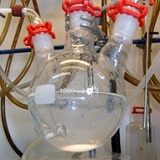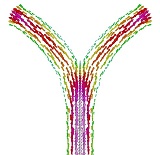Material development and characterization
The overall goal of this WPis to provide a new tailored material combination that fulfills the requirements for soft tissue engineering and which is useful to combine ink-jet printing, multiphoton polymerization and electrospinning processes as well as biofunctionalization. The most important challenge of material development is not related to a singular parameter, but rather to combine all desired properties within an appropriate combination of materials. New developed materials, for example, have to be biocompatible with tunable elasticity and possess viscosity suitable for 3D scaffold manufacturing processes. Within this WP the materials will also be evaluated regarding their chemical, physical, thermal and mechanical properties as well as basic properties of cytotoxicity.
The partners involved in this work package are Aalto University and University of Salerno, Innovent Jena, and three Fraunhofer Institutes (Applied Polymer Research, Laser Technology, Mechanics of Materials). Tailoring of materials is an iterative process which will be done not only as teamwork of this WP partners but also in close co-operation with other work packages related to biological and processing demands.
 Fraunhofer Institute for Laser Technology ILT
Fraunhofer Institute for Laser Technology ILT

